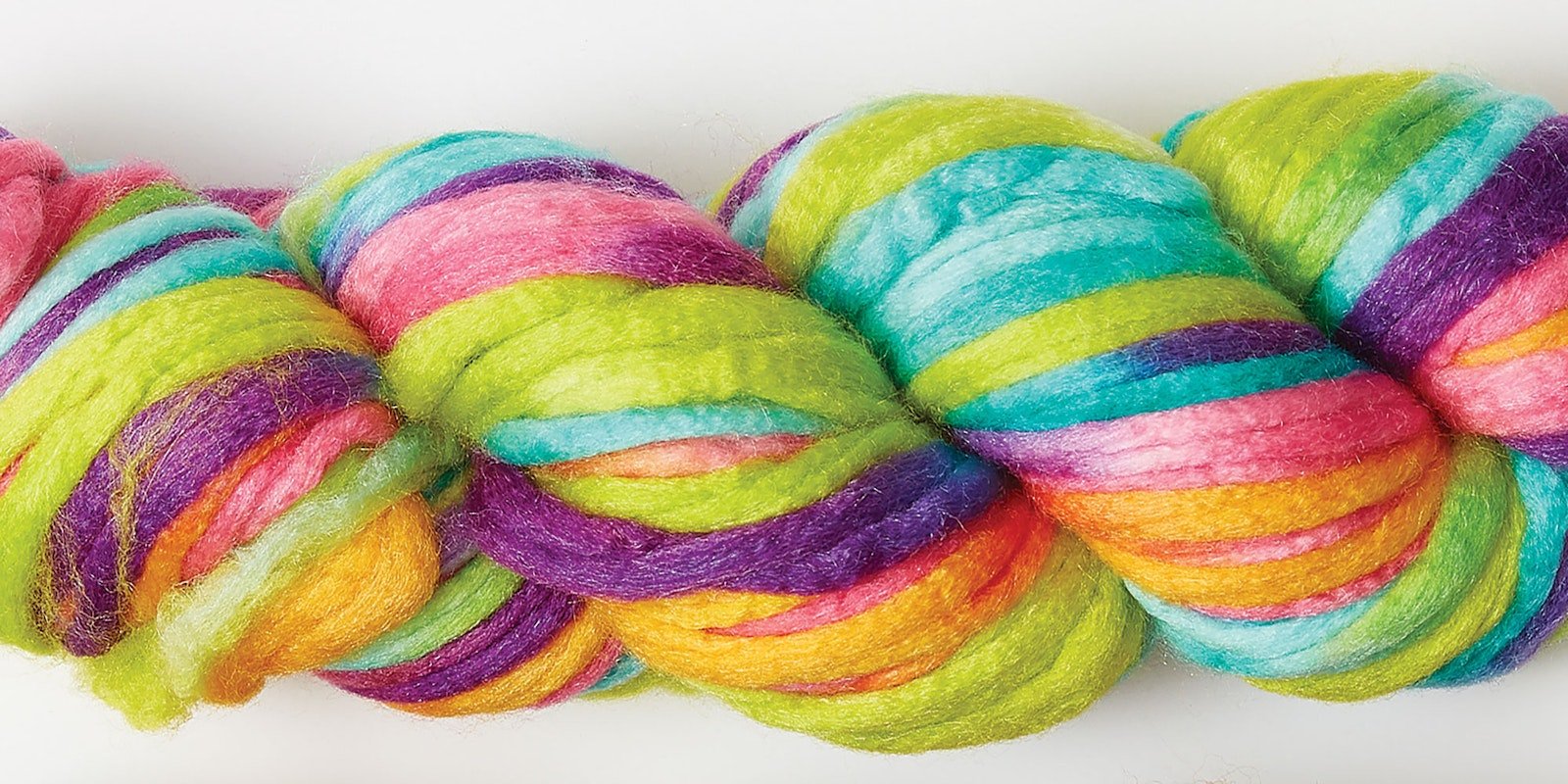When dyeing wool fiber for a project, the control of color resides in our hands. Experimenting with color, whether in the dyepot or on a wool top stretched out over a layer of plastic wrap, brings endless delight. As Kimber Baldwin says, “We all swoon over beautifully dyed fiber.”
In the Summer 2018 issue of Spin Off, Baldwin explained how the properties of water influence the dyeing process, and in the excerpt below, she tells us how water temperature plays a crucial role.
There are many factors that go into temperature dependence of reaction kinetics (how fast the reaction takes place), but a general rule of thumb employed in many chemistry laboratories is that a 10°C increase in temperature results in an approximate doubling in the rate of the reaction. The dye binding reaction does occur at room temperature, but it is extremely slow and takes on the order of 120 to 140 hours or longer! When we want colorful fiber, we aren’t patient—we want instant gratification. Heating up the reaction causes it to occur much faster. Raising the water temperature from cool room temperature of 20°C to a lukewarm 40°C decreases the reaction time by about three-fourths. The reaction that took 128 hours, for example, now “only” takes 32 hours. Taking the water temperature up another 60° to 100°C, the boiling point of water, increases the reaction rate by an additional 64 times. The dye reaction that took 128 hours to complete at 20°C is now finished in about 30 minutes—much faster than at room temperature!
Most dyers want to dye their fiber in a time-efficient manner. We can’t wait to see the beautiful results of our labors. Increasing the dye reaction rate by raising the water temperature easily achieves this goal. When rinsing hand-dyed items, we are dealing with the potential of the reverse reaction, that is, unbinding the dye from the protein. Earlier, we discussed how keeping the pH below the isoelectric point helps the dye remain tightly bound to the positively charged protein. However, it’s not possible to keep 100 percent of the dye bound to the protein. Molecules are always in motion, coming off and rebinding to the protein.
 Kimber explains that there is more to dyeing wool and other fibers than just color placement.
Kimber explains that there is more to dyeing wool and other fibers than just color placement.
When rinsing hand-dyed items, it is critical to slow down this process as much as possible. Keeping the water temperature low when washing ensures that any potential unbinding of dye occurs at a very slow rate. It is a misconception that hand-dyed items need to be washed in hot water to remove any “loose” dye. Fiber that is properly dyed should not have unbound dye. By washing at higher temperatures, you increase the quantity of dye coming unbound from the protein, resulting in pronounced fading and lower washfastness of the dyes.
Kimber Baldwin is the owner of Fiber Optic Yarns, a small indie dye studio and retail store located just outside Cincinnati in the small town of Milford, Ohio. Armed with a PhD in chemistry from the University of Michigan, she will dye anything that can’t run away fast enough. Dyeing usually involves pushing the limits of the dye chemistry to obtain unique results. You can find her online at fiberopticyarns.com.
Published October 4, 2018; updated January 28, 2020.

